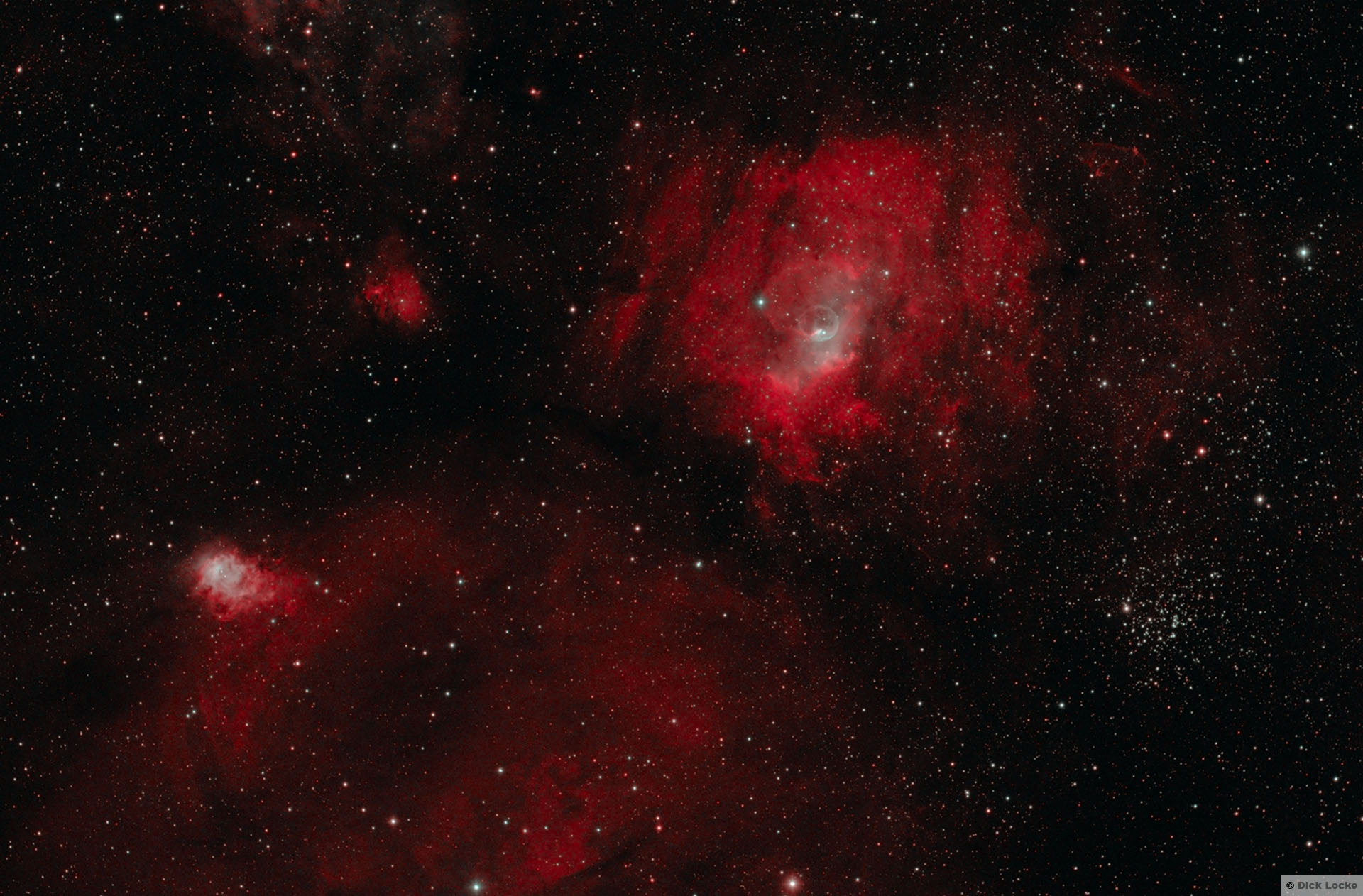
Bubble Nebula Area - Natural Color Narrowband

This shows the Bubble Nebula area (aka NGC7635, Sharpless HII region 162, or SH2-162). The bubble is formed by the "wind" and radiation from the bright star inside the bubble. This APOD page has more info. There are other interesting objects in the frame: SH2-159 is the red area to the left, SH2-158 is the very bright area lower left, SH2-161 is the bigger, read area below & to the right of that. The open cluster on the lower right is M52, and part of SH2-157 is on the upper left. The dark area on the left of the bubble is LDN 1231, and there are various other Lynds Dark Nebula (LDN) areas in the frame.
Image Details: The image reflects nearly 17 hours total exposure. It is comprised of 5 minute narrowband exposures as follows: 87 H-alpha (7.25 hr), 38 O III (3.2 hr), and 59 Sulfur (4.9 hr) frames for a total of 15.3 hours narrowband exposure. I also blended in 85 minutes of color exposure bringing the grand total to 16.75 hours.
Equipment: SBIG ST-8300m monochrome camera, narrowband filters, and the Takahashi FSQ-85 telescope with reducer riding on the AP 900GTO mount from multiple nights of imaging. The H-a component is from the image shown and described further down the page. My image processing techniques are discussed here.
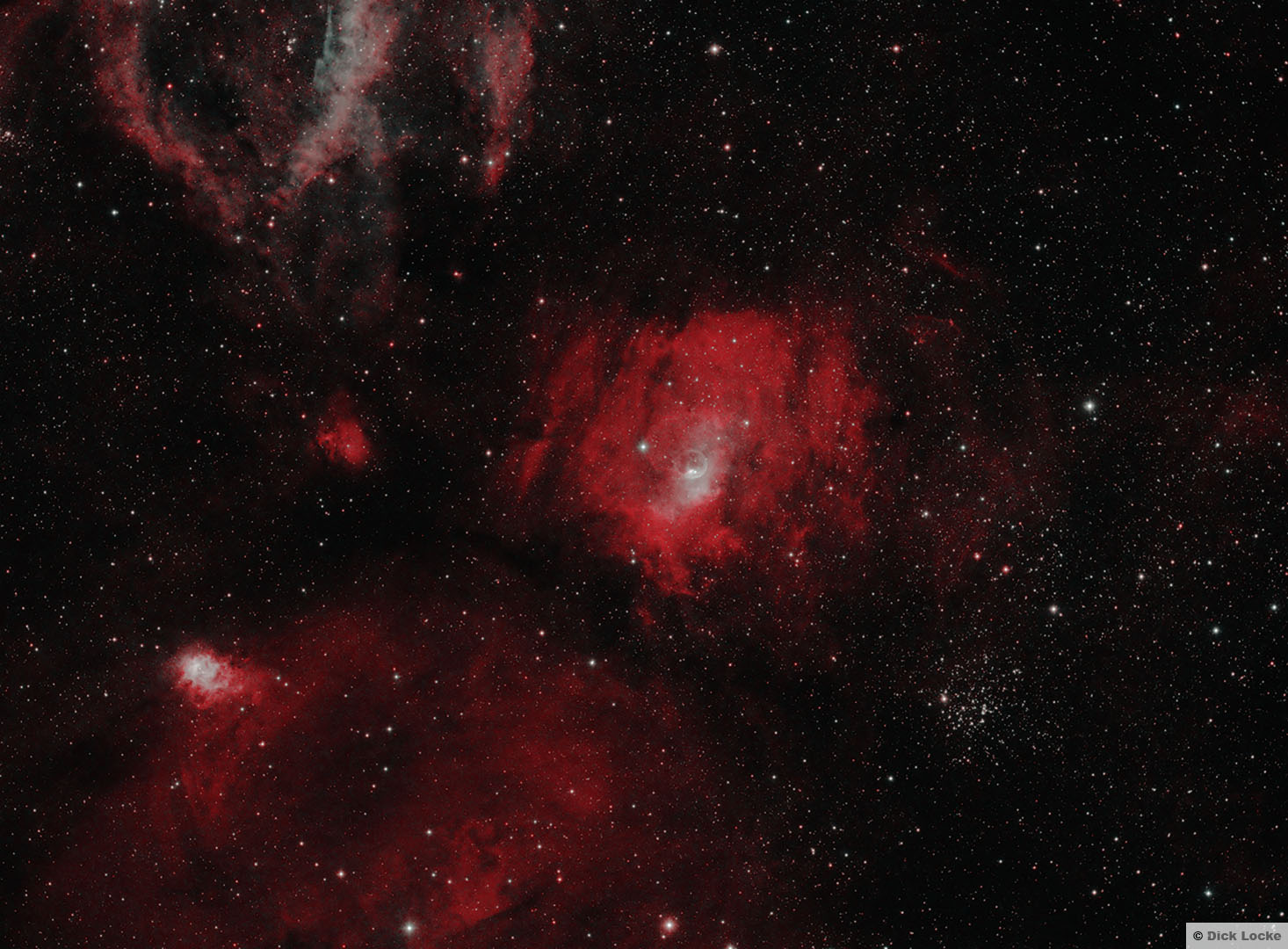
Same details as the image on top of the page, but showing a wider view of the area, especially showing some of "The Claw" SH2-157 on the upper left.
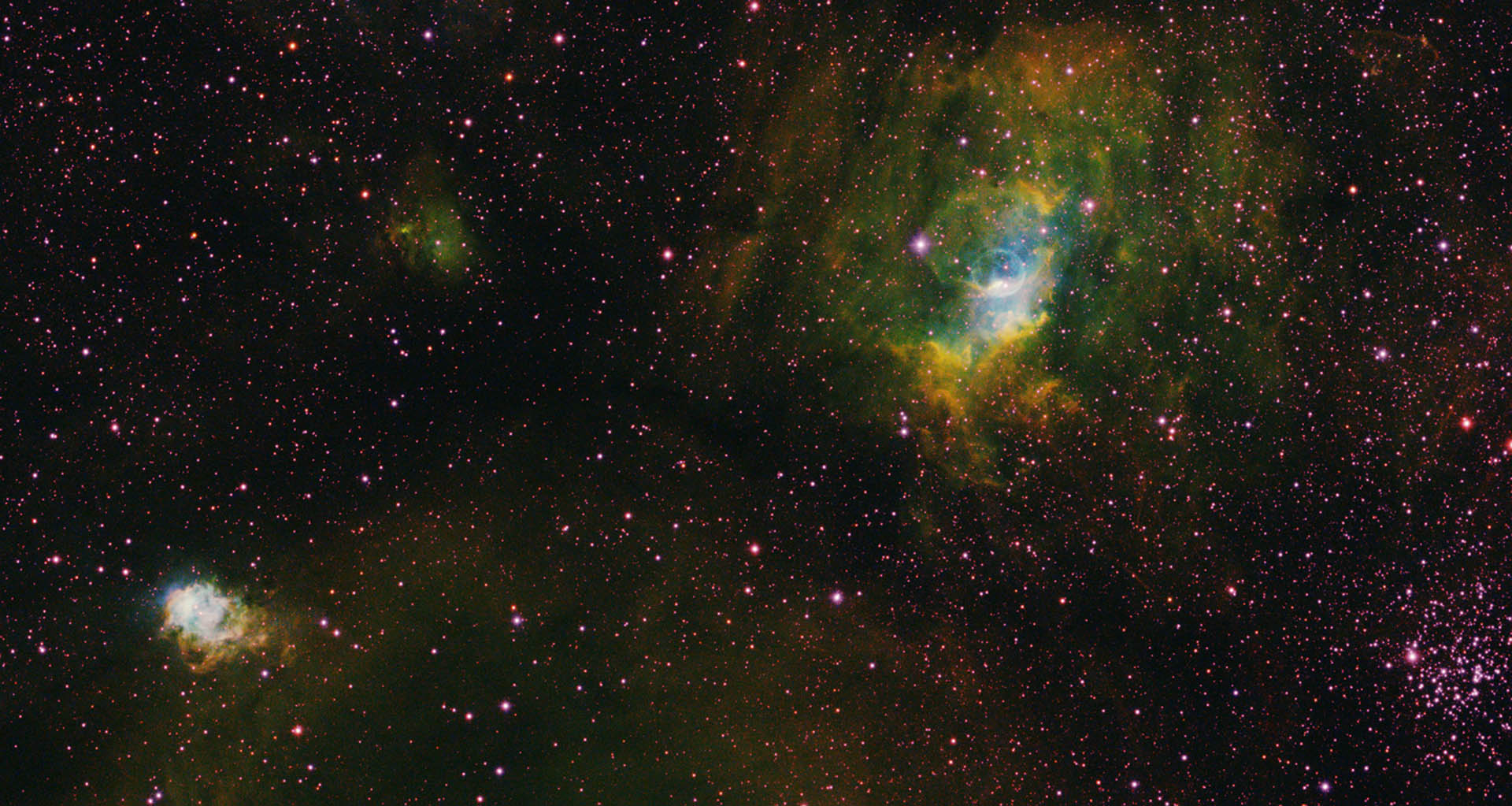
Same narrowband data as listed above, this time using the Hubble color palette.
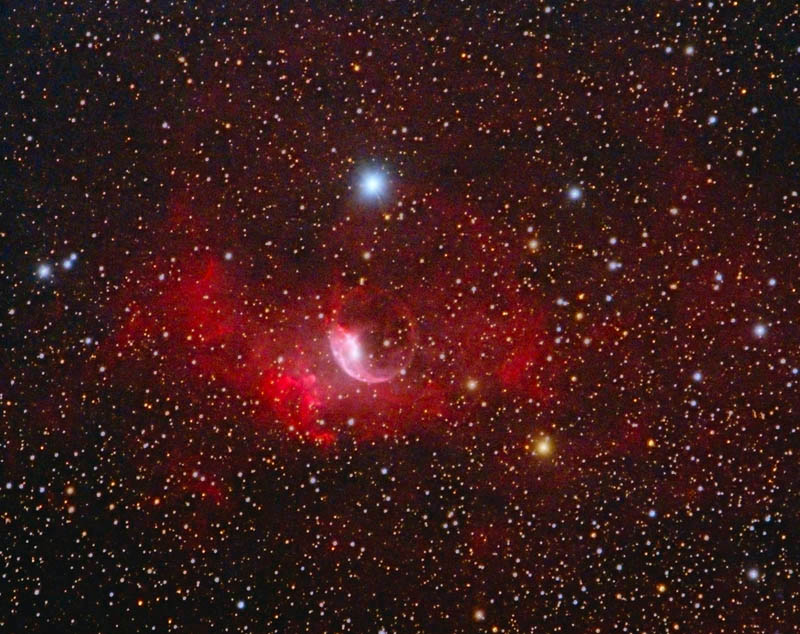
17 x 5 minutes, 85 minutes total exposure from the Davis Mountains, October 2008. Takahashi TOA 130 Telescope (a 5" APO refractor telescope) with the 1.6x extender, AP 900GTO mount, QHY8 CCD Camera. Other pictures from the camera are are here. Other pictures from the trip are here.

This is the Bubble Nebula area in Cassiopeia. Open cluster M52 is below and left. Lynd's Bright Nebula LBN 547 is the area left and above, while NGC 7538 is the small but bright nebula top and left of center. Sharpless SH-159 is the small nebula above & center, while Sharpless SH2-157 is the broad area of nebulosity on the upper right. Image Information: 13*5 min (65 min) H-alpha from the Fall of 2013 at Starry Nights B&B. The images were captured and processed via my typical image processing methods described here. Equipment: SBIG ST-8300 CCD camera with the FW8-8300 filter wheel, Astrodon narrowband 36mm filter, the Takahashi FSQ-85 telescope with reducer, AP 900GTO mount.
M52 Area and Bubble Nebula, NGC 7635
This picture features open cluster M52 and the Bubble Nebula, between Cepheus and Cassiopeia (the "M" in the northern milky way area). M52 is estimated to be anywhere from 3000 to 7000 light years from earth. M52 is visible as a dim, glowing patch in a finder scope or binoculars. From SEDS M52 Page, "Situated about 35' SW of M52 is the Bubble Nebula NGC 7635. Difficult to see visually, this is an interesting photographic object, which is probably the result of a star going nova."
The Cave Nebula is about 4 degrees away.
This is a combination of 18 x 4minute images night of 9/19/2006 at the HAS site. Canon EOS 20Da (unmodified), Takahashi TOA 130 (a 5" APO refractor), Losmandy G-11 mount. My current image processing workflow is here.
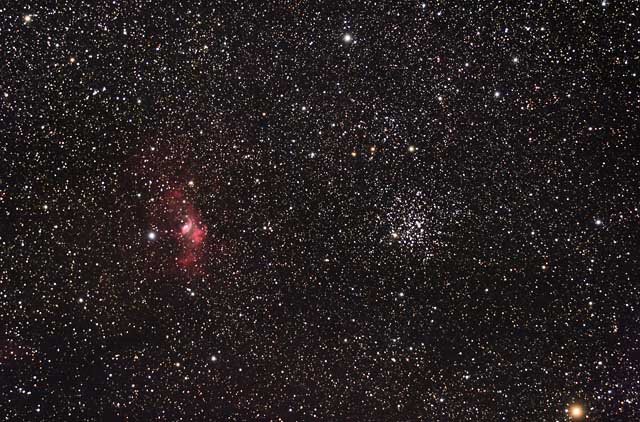
Index for September 19, 20, 21, 2006
Astronomy Pictures: Dick Locke's Astrophoto Gateway page....
Copyright © by Dick Locke. All Rights Reserved.
Contact and Image Use Information